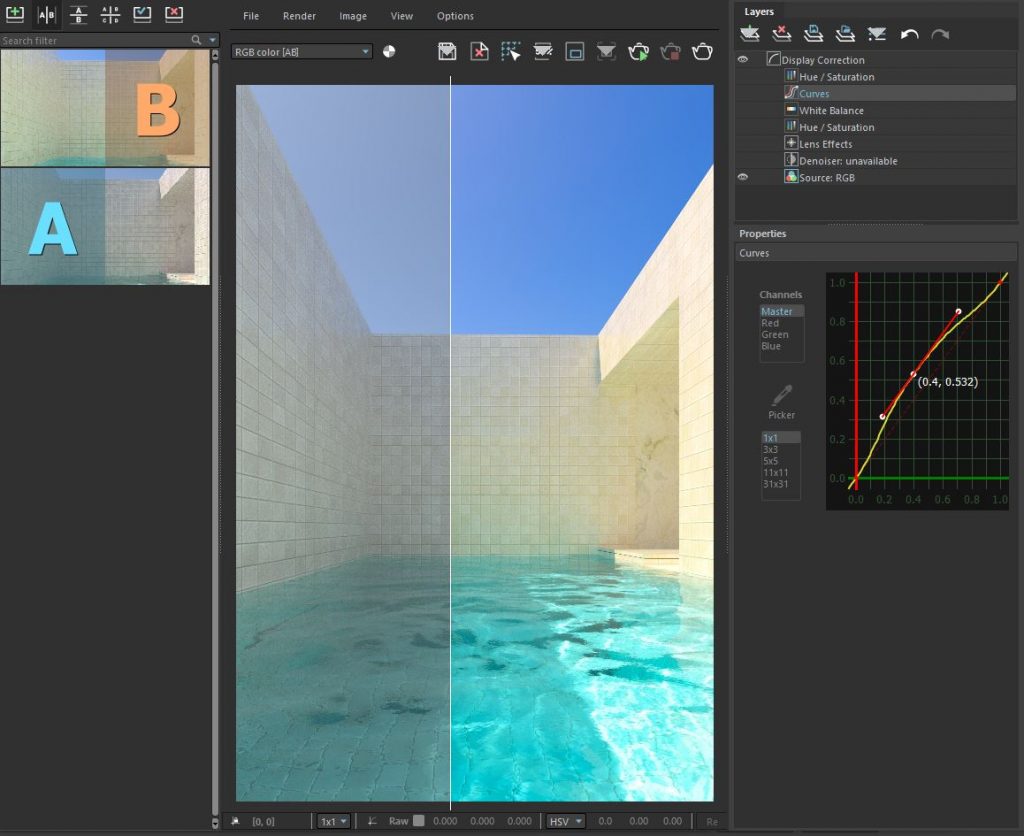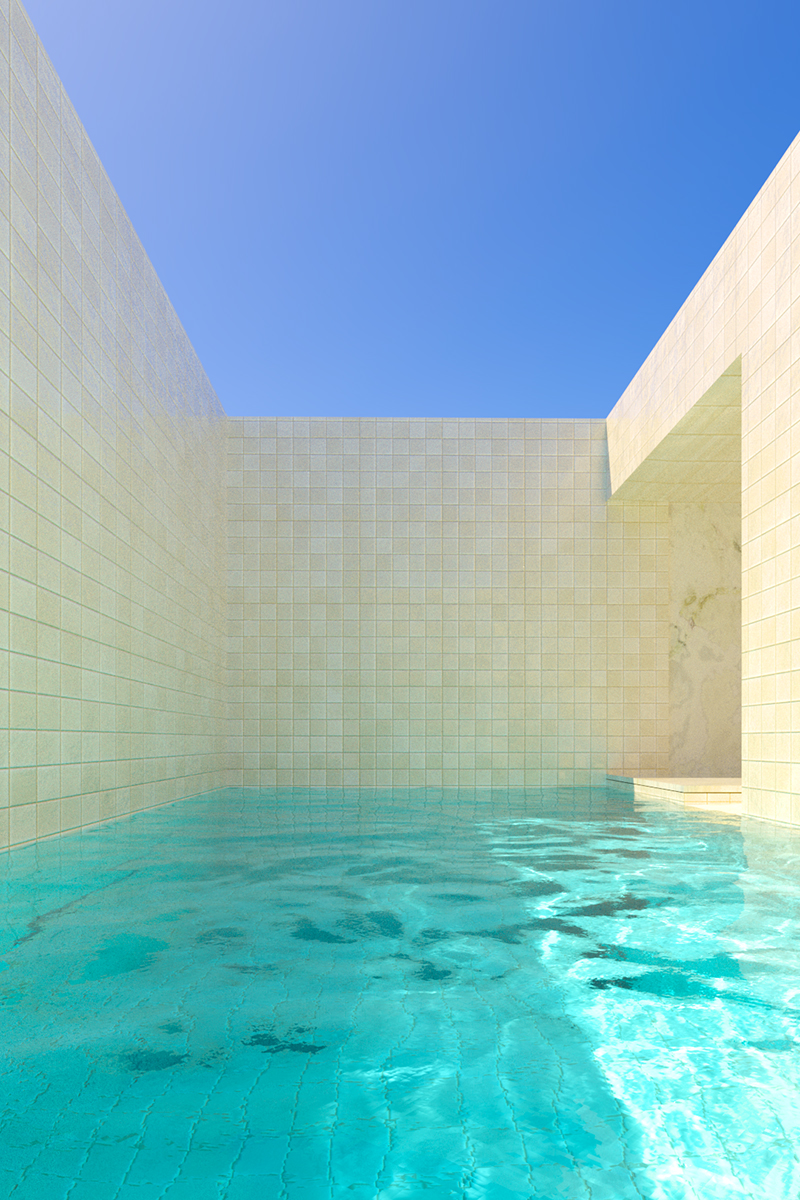This is scene is modeled with Autodesk Maya 2020 and rendered with V-Ray 5 beta for Maya. It’s a small project to test both caustics in V-Ray and the post production features of the new V-Ray Frame Buffer.
Inspiration
The idea for this rendering arose from a photo of a private pool, which is circulating the internet. The original photography can be found at the architectural project despription of ‘House in Alfama / Matos Gameiro Arquitectos‘ at the ArchDaily website.
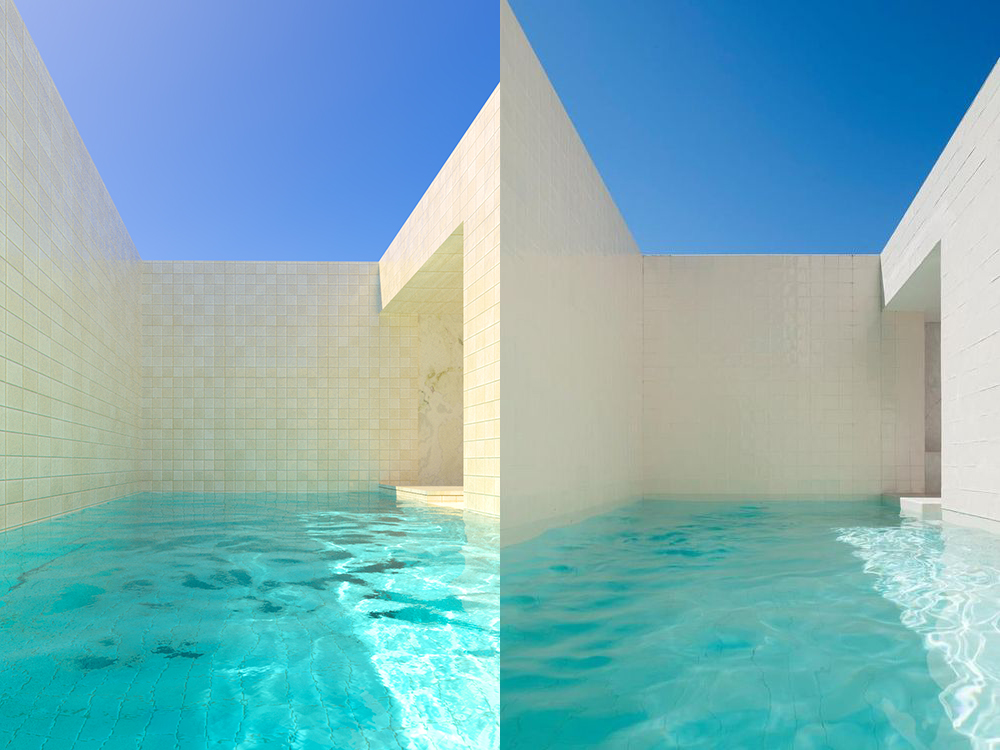
Modeling and Lighting
Geometry creation of the scene was done quickly by box modeling. The final scene consists only of 192 faces for the walls plus 51,252 for the water (a pCube with 120*1*210 subdivisions). The only light used is the VRay Sun&Sky system set to the new V-Ray 5 Improved Sky model and oriented manually to fit the shadow borders of the photography.
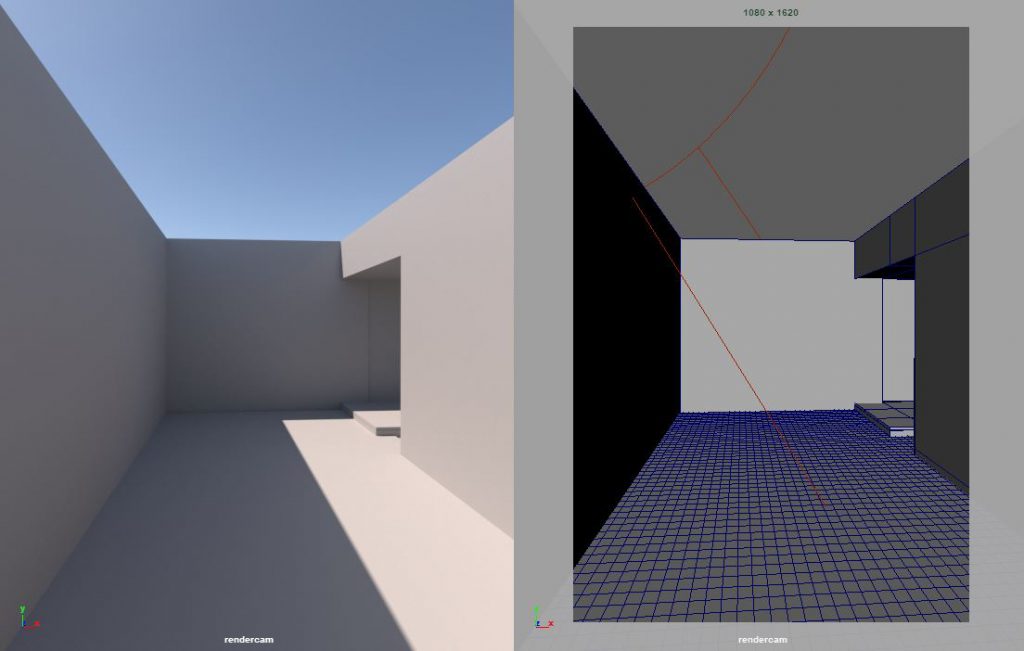
Shading
The scene consists of three different shaders. The walls are clad in glazed white tiles and the entrance of the pool and the wall behind are made from marble. Original textures with normal, reflection and displacement maps were downloaded from www.cc0textures.com.
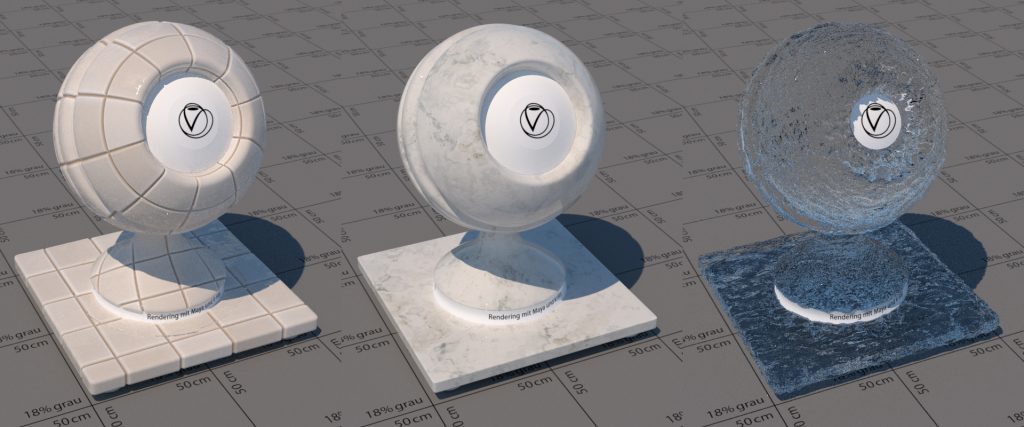
Pool Water
The pool water model is a polygonal cube with 120 by 210 subdivisions in x- and z-axis. The small waves which are necessary as well for the surface structure as the calculation of the caustics are generated by a grey scaled texture used as a displacement maps with a displacement height of max. 2 cm. The Fresnel IOR is set to 1.333 for water. Reflection and refraction color is near to pure white. The final water color is generated by a refraction Fog Color of rgb 174, 236, 241 with an Fog multiplier of 0.010. Maximal depth for tracing reflection and refractions rays is set to 12.
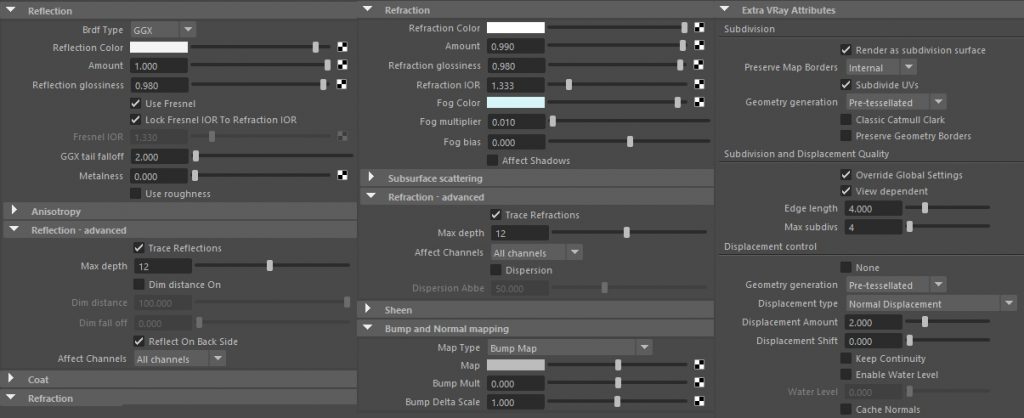
Caustics
To create caustics effects both on the walls and directly for the water some settings are important. First of all in the render settings under GI the options Caustics have to be activated. The default settings aren’t changed. To ensure caustics all over the water area, the Radius of the Photon Emission under VRayGeoSun has to be increased so that the sun radius completely covers the pool area. Here a radius of 600 cm was sufficient. Furthermore, it is important to Affect All Channels for reflection and refraction of the pool water shader and to disable the Affect Shadows option under Refraction.
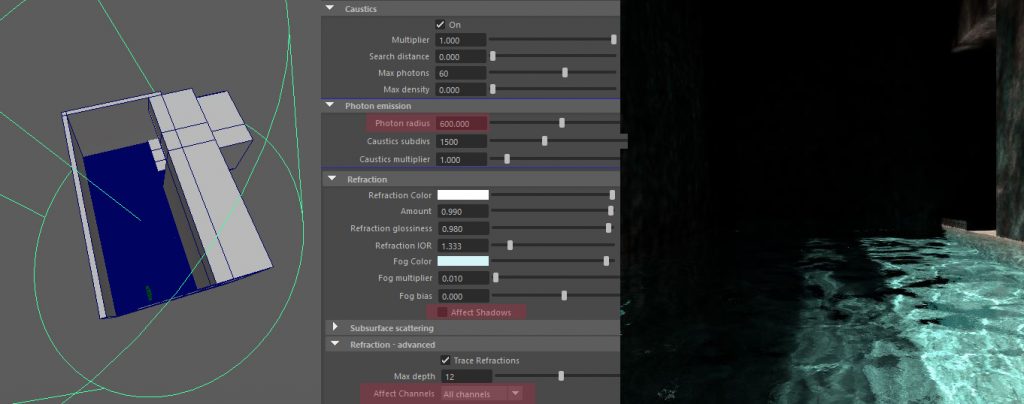
Post Production
The possibility of comprehensive post production steps directly in the V-Ray frame buffer is a particular new feature of V-Ray 5. For this project no Photoshop or other image processing software was used. All color grading steps have been done directly with V-Ray. The color corrections include an adaptions of hue and saturation as well as a white balance and a final gradation curve.
